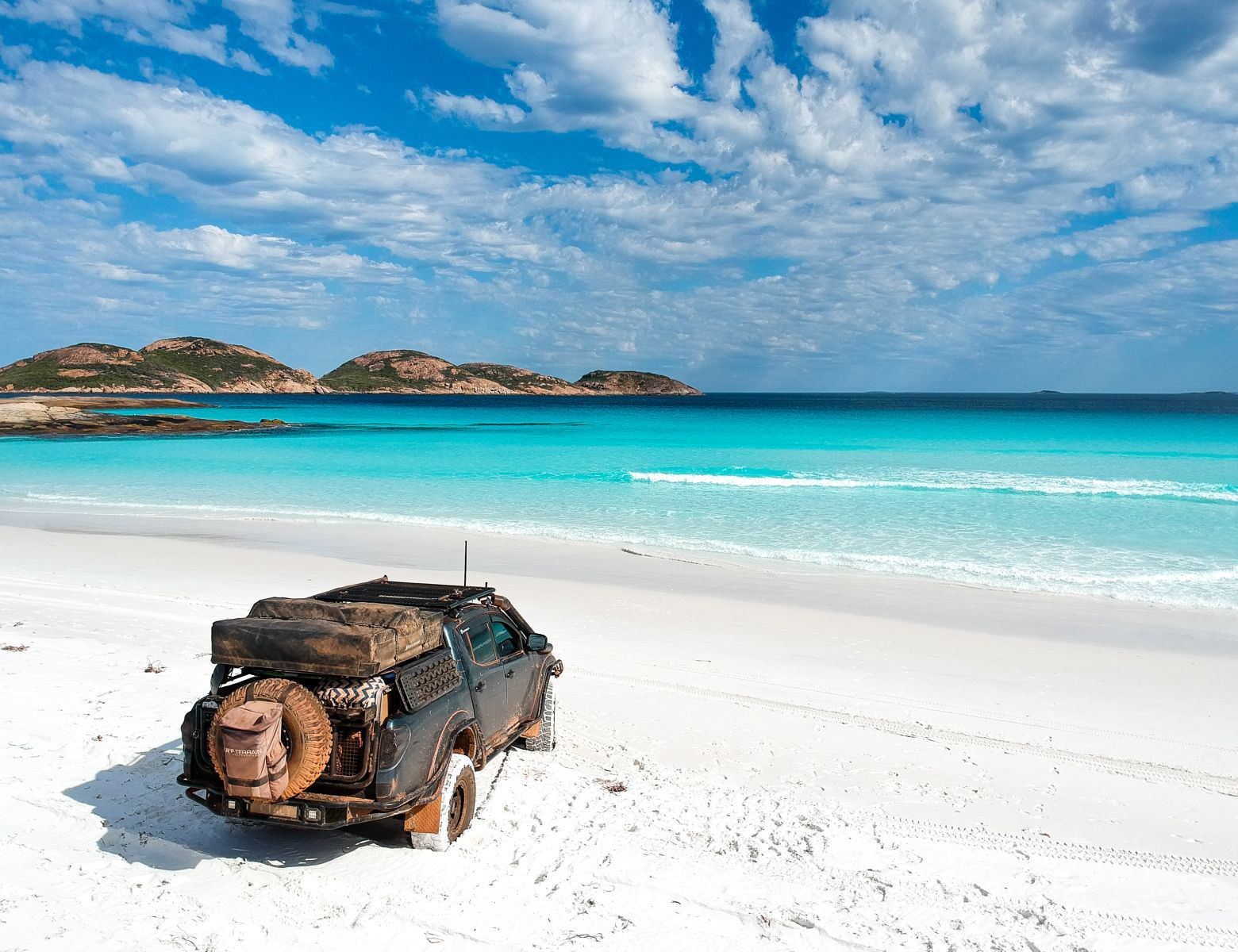Beach Holiday Checklist: Everything You Need to Bring

Planning on packing your bags and heading to a beachside town this summer? While there’s some obvious things you’ll want to take with you (sunscreen and swimmers spring to mind), there’s probably a few things you’ll forget when it comes to your beach checklist – especially if you’re planning on driving on the sand. Here’s what you’ll need to look at when it comes to your next 4x4 holiday on the beach – not just gear-wise, but knowledge-wise as well!
Understand Tyre Pressure:
Just as you always want to swim between the flags according to conditions on the beach, so too do you need to drive to conditions – and this means making sure your tyres are able to handle sand. Unlike driving on road, sand will be constantly shifting beneath the weight of your vehicle and have different densities, with both wet and dry sand presenting their own unique challenges. Understanding tyre pressure is therefore very important to check off your beach checklist. Tyres that have been correctly set up are probably your best bet at making it out if you end up stuck (although you’ll want a good recovery kit regardless – more on that soon), so lowering your tyres’ air pressure before you hit the sand is essential. You’ll need a tyre deflater to do this. Decreasing tyre pressure increases the tyre’s footprint, which helps it to “float” over the sand rather than tunnel in to it.
Since there’s so many variables when it comes to 4x4s – including weight and tyre sizes – it’s hard to put an exact number on your tyre pressure. If you’re driving on soft sand, you can drop your tyres down at as low as 16psi (but no lower) without worrying about one rolling off the rim. Just don’t drive too fast, and keep your steering steady. On wet sand, you won’t need to lower the pressure nearly as much. Having an air compressor on hand will help get your tyres back up to their regular pressure when it’s time to leave the sand.
Have A Recovery Kit Ready To Go:
Even the most experienced 4x4 drivers get bogged down! One of the best things you can check off your beach vacation packing list are recovery tracks. They can be pretty pricey, but they’re well worth it. They’re pretty ingenious: all you do is use them to dig down to the stuck wheels, then place the tracks under the tyres, giving them something to grip on to as you gently accelerate to freedom. Other things to include in your recovery kit are snatch straps (used to pull vehicles to safety using the energy generated by the strap snapping tight) bow shackles (for anchoring your snatch strap), and a good old-fashioned shovel.
Privacy, Please:
There’s not a lot of shelter out there on the beach, and even sunscreen may not save you. That’s why it’s worth investing in a good 4x4 awning – it’ll provide you with some shade once you’ve arrived on the beach, giving you a good spot to chill out and relax with a beer after a day of driving. Similarly, you can consider a portable toilet and privacy tent – these will give you privacy in a place where there’s not really going to be any cover around. On that note, you should also get the appropriate ropes and pegs to hold everything down, since there’s plenty of wind on the beach. Also: don’t forget toilet paper and a shovel, as a bare minimum!
A Few Other Things To Think About…
Permits were already in place before the coronavirus, but now they’re more important than ever. Be sure to check out what permits will be required if you’re driving on the beach as part of your holiday. Also, you should leave nothing but tyre tracks behind after your holiday. Add some rubbish bags or a rear wheel bag to your beach vacation packing list, ensuring you leave the beach as pristine as it was when you arrived. Looking for more 4x4 adventures around Australia? Why not check out our picks for the best national parks and outback experiences our country has to offer?

